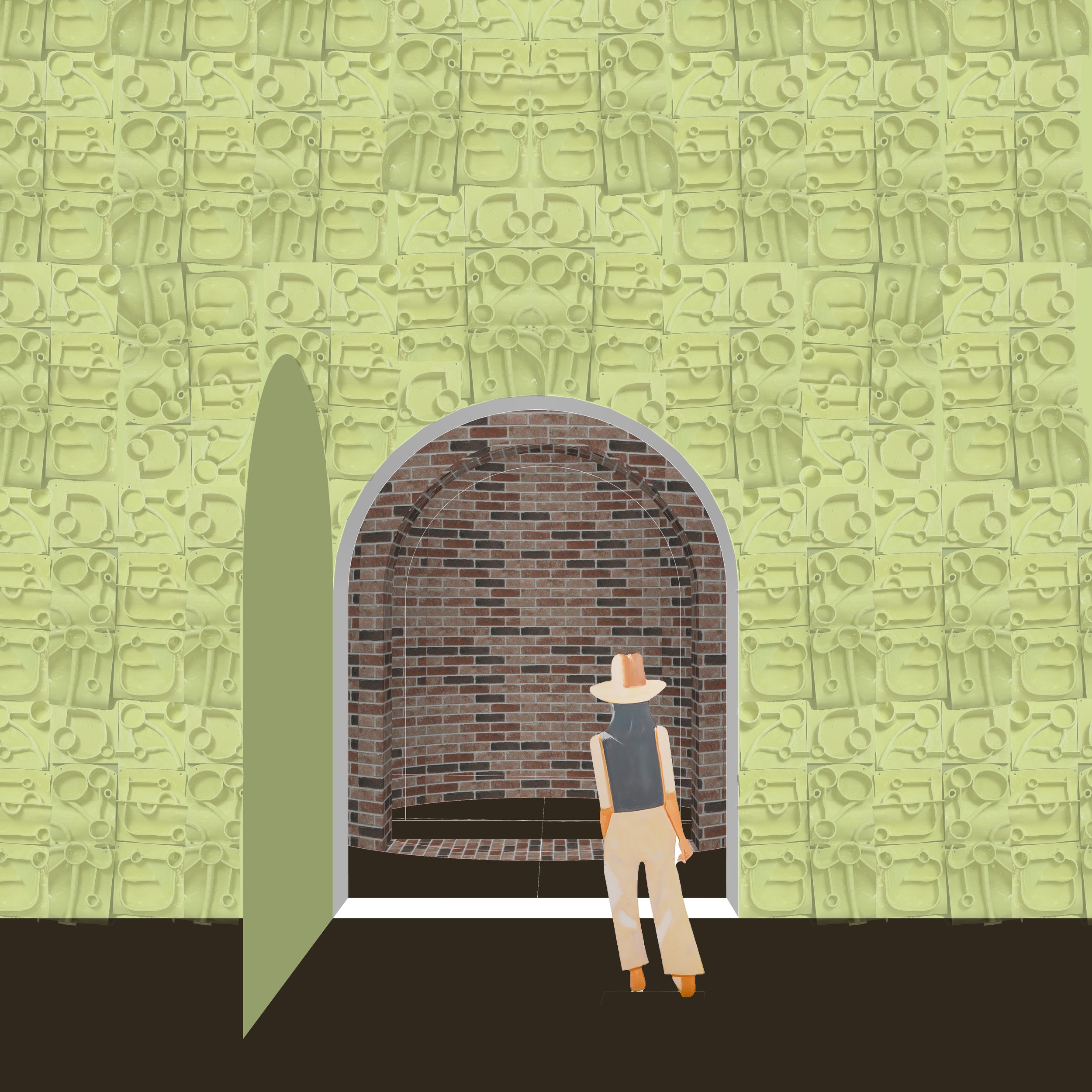canal collective
with advisor erin besler
This project looks at the history of the pottery industry in Trenton, New Jersey, the most prosperous ceramic industry in the United States during the 19th century. The industry slumped by the time of the Great Depression due to new technologies + workers being priced out, but the key to Trenton’s success as an industrial city was its perfect location between New York + Philadelphia connected by the Delaware Raritan Canal. For close proximity to work, canal bridge-tenders were given houses; 10 of these houses remain, some as museums, others have fallen into disrepair + are boarded up. The project looks at the canal as a site for the renewal of an architectural ceramics industry as a network of small-scale production, intervening on the 10 canal houses between Trenton and New Brunswick. The project looks at methods of preservation of these structures through replication and scaling, methods seen in the replication of the Lascaux cave and sculptures by Rodin. The representational studies in ceramic themselves take place in three scales: [1] massing studies at 1/8 in, [2] a functional component study at 1/2 in, + [3] a full scale investigation of a corner of the building façade system.
Using clay sediments from the already active dredging of the canal, a new system of production can be established that gives new life to the canal and the vacant canal houses while showcasing required production steps as well as the architectural ceramic products. Canal Collective proposes that the clay in this sediment is used to revive and support a ceramic industry along the canal to reactivate the canal’s rich connection to the history of ceramics. The celebration of the industry’s historic reliance on the Delaware-Raritan Canal presents an opportunity to look at local materials, businesses, traditions, and economies and support a community of artists and business owners through a collective, member- owned studio network. In the case of the firing spaces, the intervention is a scaled up version of the existing house that wraps around the existing structure and a gas kiln. In the case of the clay storage space, the existing structure is replicated next to the building to create more space for storage and making while reorienting the fronts of the buildings towards the canal instead of the street.
Master of Architecture thesis, Spring 2022, Princeton School of Architecture















